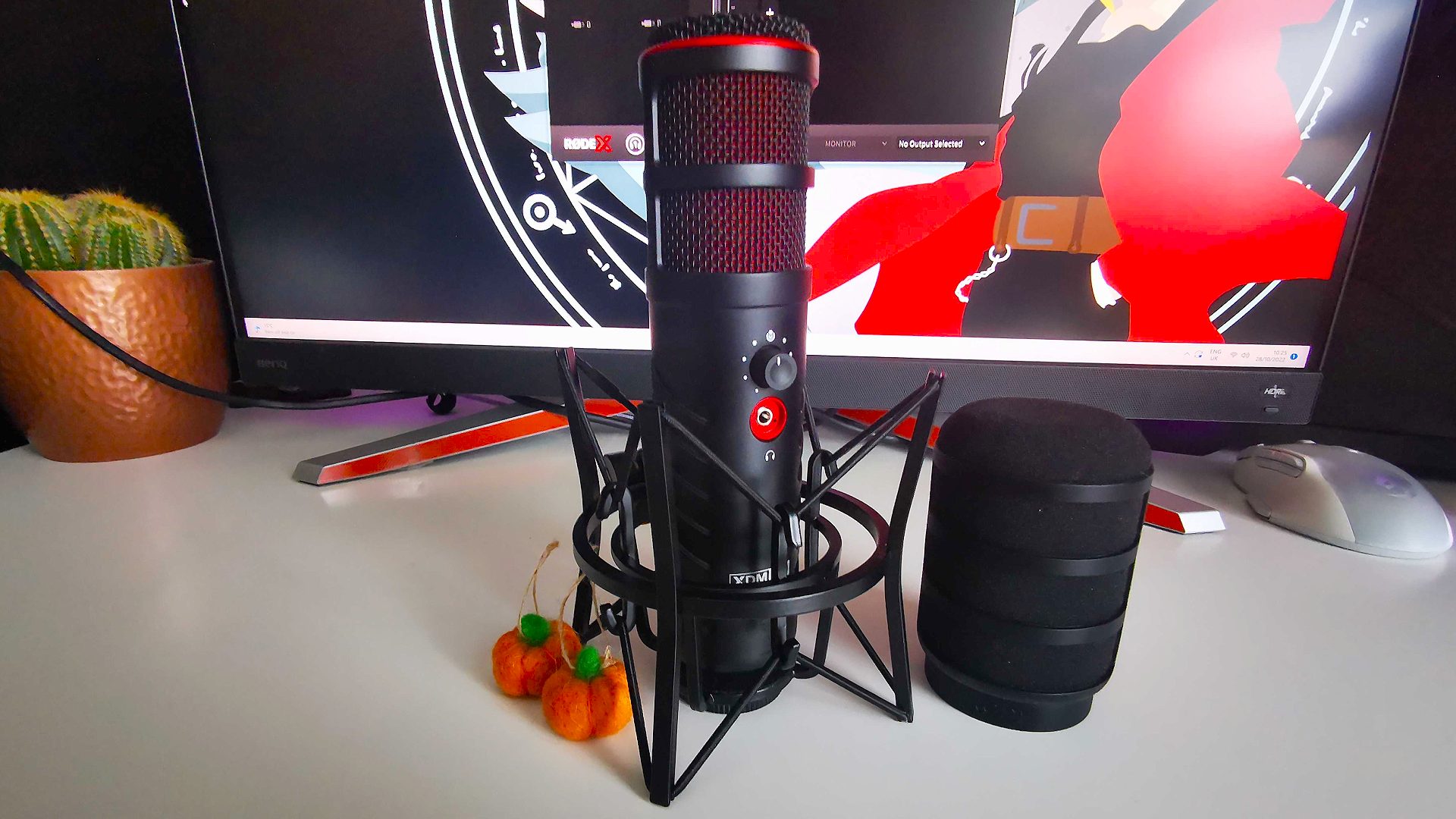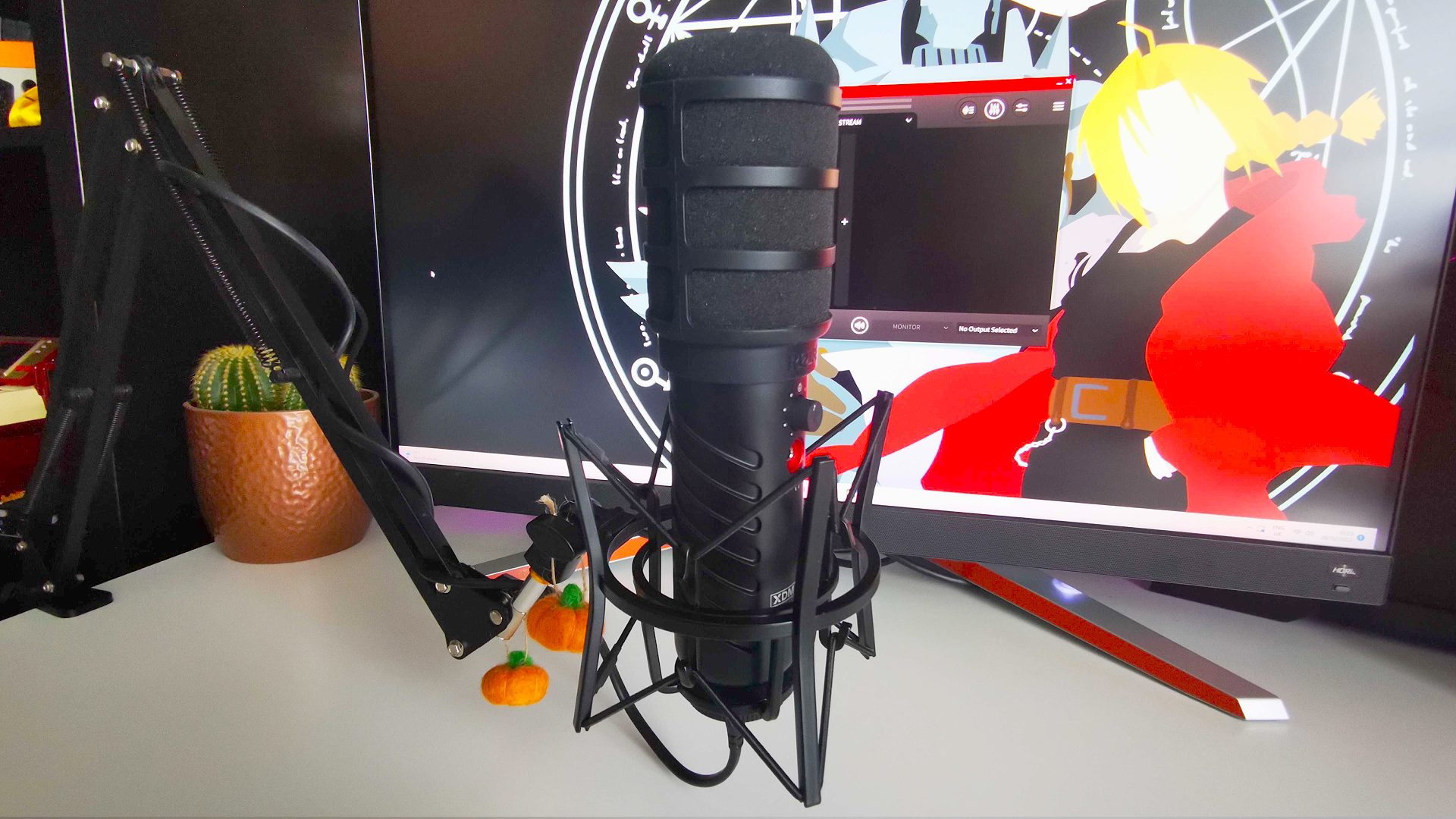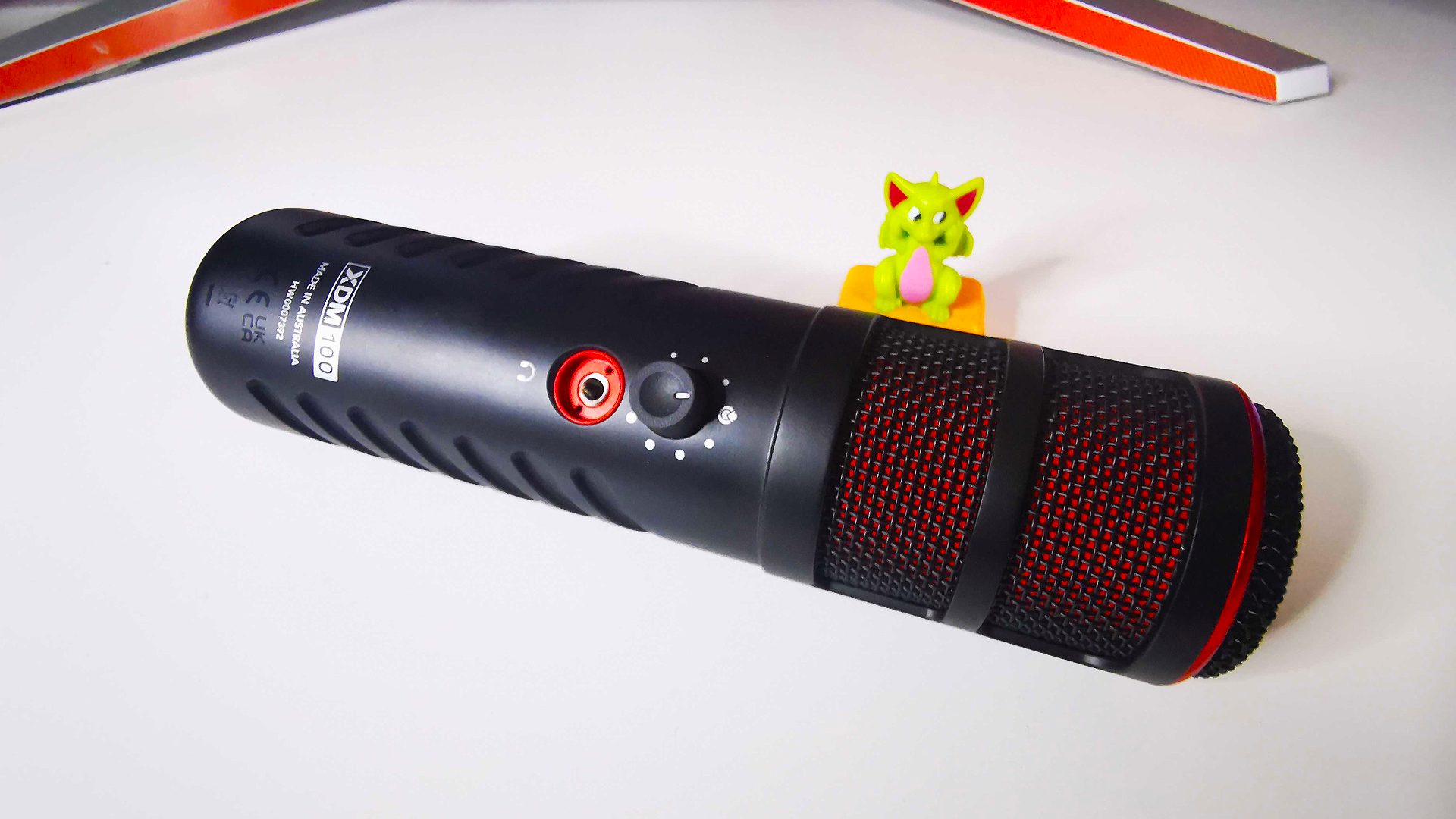Rode X XDM-100 it’s the audio company’s gift to the Twitch streamer market because it’s a superior gaming microphone that will multiply your setup tenfold. Sure, it’s a USB-C microphone that puts convenience first, but I’d say it belies the idea that XLR devices are necessarily better, especially when it comes to creating gaming content on PC.
We can say that the Rode X XDM-100 has a reputational advantage because the Australian firm is already known for its high-quality audio equipment. It could go either way, having expected a lot from the company after hearing about its new gaming division and its ambitions. Thankfully, the new dynamic mic offers all the performance you’d expect from a Rode mic, even if the price is a bit high for my blood.
Priced at $249 / £269.99, the Rode X XDM-100 is clearly aimed at experienced streamers looking to build the best gaming PC setup possible. That’s not to say beginners shouldn’t consider buying it, but I don’t blame it for being disappointed by its premium MSRP. However, the price of the premium USB-C microphone is well worth it, and the accompanying software reinforces its potential position at the top.
Rode X XDM-100 Specifications
On paper, the Rode X XDM-100 is comparable to the Blue Yeti X and Elgato Wave 3, offering a dynamic capsule, USB-C connectivity, and a wide 20Hz-20kHz frequency response. Its 24-bit depth also earns it a spot on our list of the best gaming microphones, though its pattern options are limited to just cardioid.
| Rode X XDM-100 Specifications | |
| Sampling frequency | 48kHz |
|---|---|
| Debit | 24 bit |
| response frequency | 20Hz – 20kHz |
| polar patterns | cardioid |
| Link | USB-C, 3.5mm listening |
Advantage
- Excellent sound quality.
- Excellent build quality.
- Elegant design.
the least
- incredible price
- A single pickup pattern.
What some audio enthusiasts, especially those familiar with Rode technology, may like is the Revolution preamp. The internal amplifier, originally designed for the Rodecaster Pro II, eliminates some of the need for additional processing and gain enhancement, and really helps the Rode gaming microphone shine.

Design Rode X XDM-100
Not all gaming peripherals need flashy RGB lighting, and Rode is certainly sticking to what he knows with the XDM-100. The mic is clearly Procaster-related, though, with the same sleek black finish, handsome premium metal body, and subtle ridges that scream “I’m a professional studio mic.”
Could Rode have created a microphone that stands out more from the crowd? Maybe, but whether or not it’s good depends on your personal taste. If you’re a streamer who wants to put on a show with a flashy setup, you’ll probably want something flashy like the Logitech Blue Sona. Otherwise, you’ll be fine with the understated look of the XDM-100.
Naturally, there are other differences between the XDM-100 and the Procaster, such as the headphone jack and the volume control on the front of the microphone. You’d be surprised how many companies neglect manual control, but Rode’s sleek dial is sleek, responsive, and the built-in mute button wins me over with the click of it.
Not all microphones come with optional accessories, but the Rode XDM-100 does come with a PSM1 shock absorber. It’s a solid gift and works like a makeshift crutch, but more or less meant to be used by hand. This is the route I took for testing purposes, but the XDM-100 foot thread should support a variety of tripods and tripods.
The XCM-100 also comes with a pop filter, but I’d still suggest using a separate screen if you want to get rid of those pesky B’s and P’s. a little light tube that allows the blue LED on the mic to shine through (really help with aesthetics).

Rode X XDM-100 Performance
I’ve used a number of different USB microphones over the years and the Rode X XDM-100 blew me away quicker than anything I’ve tried. Clarity is at the forefront of the experience, and it’s hard to find fault with the microphone’s pickup capabilities. Loose bass and crisp highs make Rode’s dynamic variant sound powerful in-game, and Twitch viewers will notice the difference.
Of course, if you’re using the best gaming mouse, you don’t want its clicking buttons to ruin your pretty sounds. This is where choosing the Rode cardioid circuit comes in, as it will allow you to position things correctly to avoid any unwanted ASMR bottoming out.
As far as distance is concerned, one should not stray too far from the XDM-100, as this would cause a slight drop in quality. Nothing stops you from increasing the gain, but increasing the power will negate the advantage of low sensitivity.
If more USB mics like the XDM-100 come along, I think we’ll see fewer pro content creators and broadcasters switch to XLR setups. While you can get the Elgato Wave DX and interface for a little less than the standalone Rode option, not having to clutter your gaming desk with a mixer may be worth the extra $16. Not to mention, you’ll still have access to volume controls and virtual channels with the company’s new software.

Software Rode X XDM-100
Rode’s gaming microphone ambitions hinge on more than hardware, as the company has developed a comprehensive virtual audio mixer. Dubbed Unify, the software suite is similar to the Elgato Wave Link, but its color scheme is more like the fancy Fisher Price app.
Color scheme jokes aside, I’m actually a big fan of Unify and love that it mimics the design of Rode’s Rodecaster Pro physical mixing console. I’d suggest familiarizing yourself with the software before diving in, but its intuitive layout makes it fairly easy to use on the go, as the Rode X microphones instantly appear in the app.
Unify also includes Aphex, an advanced processor that lets you fine-tune your sound with presets and gate. Tools like this are a boon if you want to remove excessive background noise, and the software does a good job of filtering it out. I’ve also experimented with the Exciter and Big Bottom presets, which work well as additional EQs but aren’t groundbreaking.
It should be noted that while Rode Unify is free to use with the XDM-100 and XCM-50, it is actually a subscription service. So if you plan to use the software without the Rode X microphone, it will cost you $5 per month. You could say that the fact that it comes with a microphone adds value, but it doesn’t seem like it should be classified as a gift.
In a nutshell, the XDM-100 is a fantastic gaming microphone that combines the best of the XLR setup. Its MSRP is more than I’m comfortable with, but that’s not entirely unreasonable considering its premium build, audio quality, and Unify software support. So if you have an extra $250 for a mic and cheaper USB alternatives like the Blue Yeti aren’t up to the task, I recommend you splurge on this awesome Rode X ripper.
Rode X XDM-100
A great USB-C gaming mic that will save Twitch streamers the hassle of buying a full XLR rig, but the Rode’s excellent sound capabilities come at a hefty price.
Source : PC Gamesn

